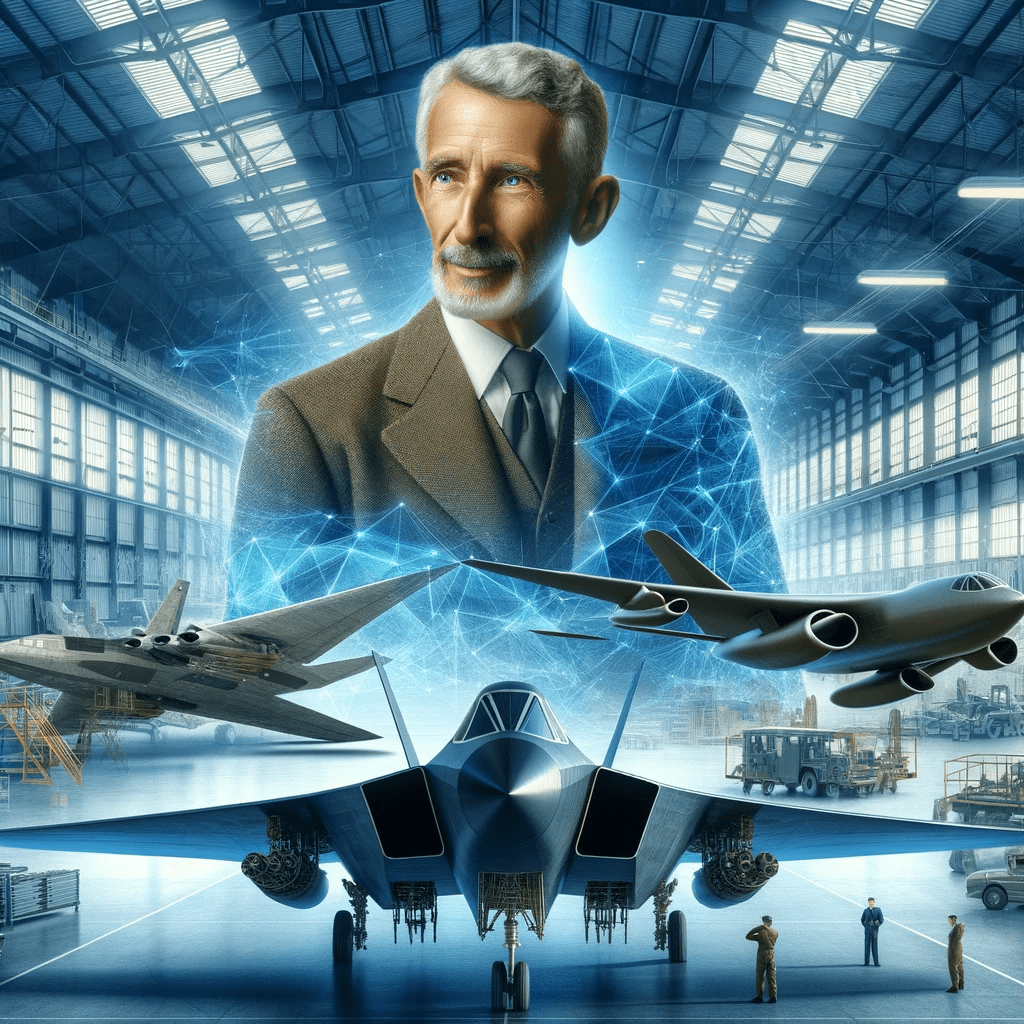John Northrop

John “Jack” Northrop was an influential American aircraft industrialist and designer, best known for his development of the flying wing and other innovative aircraft designs. Born on November 10, 1895, Northrop played a significant role in the advancement of aviation technology.
His career in aviation began with the Loughead Aircraft Manufacturing Company (later renamed Lockheed) in the early 1920s. In 1927, he co-founded the Lockheed Aircraft Company. Northrop’s passion for innovative design led him to explore unconventional aircraft structures, most notably the flying wing concept.
In 1939, he founded the Northrop Corporation, which became a major aerospace manufacturer. One of his most famous designs was the YB-35 and YB-49 flying wing bombers, which were precursors to modern stealth technology. The unique design of these aircraft, with no distinct fuselage or tail, was aimed at reducing drag and increasing efficiency.
Although the flying wing bombers did not enter production, Northrop’s work laid the groundwork for future stealth aircraft, including the B-2 Spirit bomber developed many years after his death. Northrop’s contributions to aviation have been recognized with various honors, and he remains a significant figure in the history of aerospace engineering. John Northrop passed away on February 18, 1981, leaving behind a legacy of innovation and advancement in aircraft design.
So, while John Northrop was directly responsible for founding the Northrop Corporation, his association with Lockheed was as a key employee and designer rather than as a founder. Both companies, Lockheed Martin and Northrop Grumman, have become giants in the aerospace and defense industry, heavily influenced by Northrop’s early work and innovations.
- Lockheed Aircraft Company: While John Northrop did not directly found Lockheed, he played a significant role in its early development. He joined the Lockheed Aircraft Company, originally founded as the Alco Hydro-Aeroplane Company by Allan and Malcolm Loughead (later changed to Lockheed), in the early 1920s. Northrop’s contributions as an engineer and designer were pivotal in the development of several of Lockheed’s early aircraft designs. However, it was not until after Northrop had left that the company grew into the larger Lockheed Corporation and eventually merged with Martin Marietta in 1995 to become Lockheed Martin.
- Northrop Corporation: John Northrop founded the Northrop Corporation in 1939. This company was his own venture, where he was able to more fully realize his innovative ideas, particularly the flying wing concept. The Northrop Corporation made significant advancements in aviation and later evolved into Northrop Grumman after merging with Grumman Aerospace in 1994, long after John Northrop’s death.
In a 1974 interview, John Northrop, shared his insights on UFOs, drawing from an experience narrated by Max Stanley, Northrop’s chief test pilot. Around 1950, Stanley, accompanied by two observers, reportedly witnessed a UFO during a flight from Albuquerque to Los Angeles. This sighting, which lasted about 20 minutes, was deemed credible due to the expertise and reliability of the observers.
Northrop, who had never personally seen a UFO, expressed complete trust in Stanley’s account. This incident sparked Northrop’s interest in UFOs, leading him to extensively research the topic. His studies reinforced his belief in the existence of UFOs, particularly intrigued by their unique movement patterns and propulsion methods, which seemed to defy conventional aerodynamic principles.
He speculated that UFOs might use an unknown power source, possibly related to fusion energy, which could offer unlimited power. Northrop noted that the propulsion of UFOs was distinct from anything known in current technology, highlighting their ability to hover, accelerate rapidly, and reach high speeds without creating sonic booms.
Addressing the aerodynamic design of UFOs, Northrop observed various shapes, including saucer-like and cigar-shaped forms. He opined that their shapes did not contribute to their aerodynamic properties, emphasizing that their flight characteristics were uniform across different forms.
Northrop acknowledged that while many sightings could be explained through current scientific knowledge, a significant portion remained unexplained. He compared the ridicule faced by UFO researchers to historical skepticism encountered by pioneers like the Wright brothers, arguing that ridicule was unwarranted in serious discussions about authentic UFO sightings.
Northrop speculated on the future of human UFO technology. He believed that progress in this area would depend on the seriousness and rigor of scientific research into UFOs. He suggested that correlating and analyzing thousands of UFO sightings with modern computers could yield new insights. However, he was uncertain about the timeline for understanding or replicating UFO technology, estimating it could take anywhere from a decade to thousands of years.


